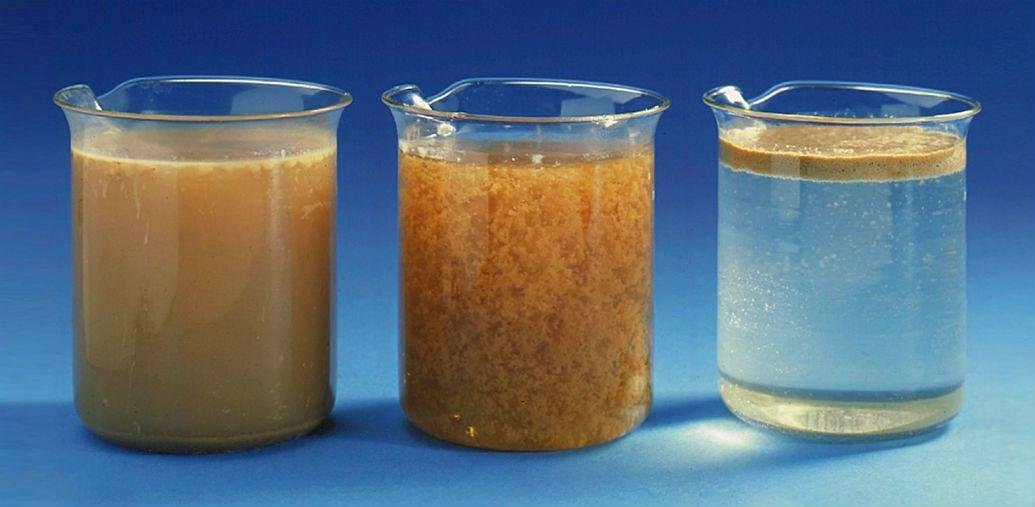-
Feed de notícias
- EXPLORAR
-
Blogs
-
Grupos
Flocculant and Coagulant Market Technological Innovations and Product Advancements

Introduction
The flocculant and coagulant market is undergoing a significant transformation driven by technological advancements, sustainability goals, and evolving end-user demands. Once limited to traditional inorganic chemicals, the market has expanded to include advanced polymer formulations, smart dosing systems, green chemistry approaches, and nano-engineered products. These innovations are improving treatment efficiency, reducing operational costs, and enabling more sustainable water and wastewater management across industrial, municipal, and commercial sectors.
This article delves into the emerging technologies and product innovations shaping the flocculant and coagulant market globally.
The Push Toward Advanced Treatment Technologies
Modern water challenges require more than just conventional chemistry. Water sources are becoming more polluted and diverse in their composition, with contaminants ranging from heavy metals to microplastics, pharmaceutical residues, and organic matter. In response, manufacturers and water engineers are developing next-generation flocculants and coagulants that offer:
-
Higher efficiency at lower dosages
-
Adaptability to various water chemistries
-
Faster settling rates and improved clarity
-
Lower sludge volumes and easier disposal
Key Technological Innovations in the Market
1. Polymer-Based Flocculants
Traditional inorganic coagulants like alum and ferric chloride are being supplemented or replaced by synthetic and natural polymer-based flocculants, including:
-
Cationic, anionic, and nonionic polyacrylamides (PAMs)
-
Copolymerized variants for customized treatment objectives
-
High-molecular-weight formulations for faster floc formation and better sedimentation
These polymers are used across sectors such as mining, textiles, oil & gas, and municipal wastewater plants due to their precision, cost-effectiveness, and ability to handle variable influent quality.
2. Green and Biodegradable Flocculants
Sustainability is a rising priority, and so is the demand for eco-friendly alternatives to synthetic polymers. Green flocculants are derived from:
-
Starch
-
Cellulose
-
Chitosan (from shellfish waste)
-
Guar gum and other plant-based polysaccharides
They offer low toxicity, biodegradability, and are especially useful in drinking water treatment and sensitive ecosystems.
Smart and Automated Chemical Dosing
3. Real-Time Monitoring Systems
Modern treatment facilities are increasingly integrating sensor-based monitoring with chemical dosing systems. These systems measure parameters such as:
-
Turbidity
-
pH levels
-
Total suspended solids (TSS)
-
Flow rate and conductivity
Using this data, automated dosing units calculate and inject the precise amount of flocculant or coagulant needed, reducing both chemical waste and operational costs.
4. AI and Machine Learning Integration
Advanced systems now incorporate machine learning algorithms that predict fluctuations in influent water quality and automatically adjust chemical dosing, enhancing efficiency and long-term cost savings.
Hybrid Coagulants and Formulation Engineering
5. Dual-Function Products
Manufacturers are formulating hybrid chemicals that combine the benefits of both inorganic and organic agents. These multi-action solutions:
-
Improve particle destabilization and aggregation simultaneously
-
Reduce sludge production
-
Work efficiently across a broad pH range
Hybrid coagulants are especially valuable in sectors with fluctuating waste streams, such as pulp and paper, mining, and textiles.
Nano and Micro-Scale Innovations
6. Nano-Coagulants
Emerging R&D is focused on nano-sized coagulants and flocculants with superior surface area and reactivity. These offer:
-
Faster reaction times
-
Enhanced pollutant capture
-
Better control over floc size and density
While still largely in experimental or early commercial stages, nano-technologies could revolutionize high-precision treatment applications in the near future.
Regional Adoption Trends
-
North America: Leading in automation, smart water systems, and polymer innovations.
-
Europe: Focused on biodegradable flocculants and green chemistry to align with circular economy goals.
-
Asia-Pacific: Rapid adoption of cost-effective, high-efficiency flocculants for industrial and municipal growth.
-
Middle East & Africa: Interest in hybrid and nano-formulations to treat brackish water and challenging effluents.
Benefits of Technological Innovation
-
Improved treatment consistency and performance
-
Reduction in chemical consumption and residuals
-
Fewer operational interruptions and better system efficiency
-
Lower environmental impact and enhanced sustainability credentials
These benefits are attracting investments from industries and municipalities looking to future-proof their water management operations.
Challenges to Widespread Adoption
Despite their advantages, innovative products face a few barriers:
-
High initial cost of advanced dosing systems and specialty chemicals
-
Limited awareness and technical expertise, especially in developing regions
-
Regulatory approval delays for novel chemical compositions
-
Incompatibility with older treatment plant infrastructure
Overcoming these hurdles requires a combination of education, incentives, and public-private collaboration.
Conclusion
Technological innovation is revolutionizing the flocculant and coagulant market, offering more effective, sustainable, and intelligent solutions for a wide range of water treatment challenges. As water quality concerns rise and environmental regulations tighten, these advancements will become essential tools for industries, municipalities, and environmental agencies alike. The future of the market lies in green chemistry, automation, and custom-engineered products that maximize performance while minimizing cost and ecological impact.






